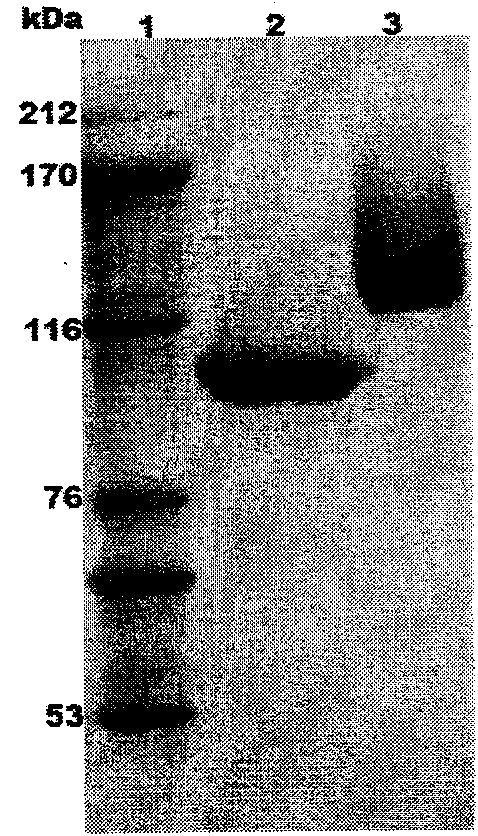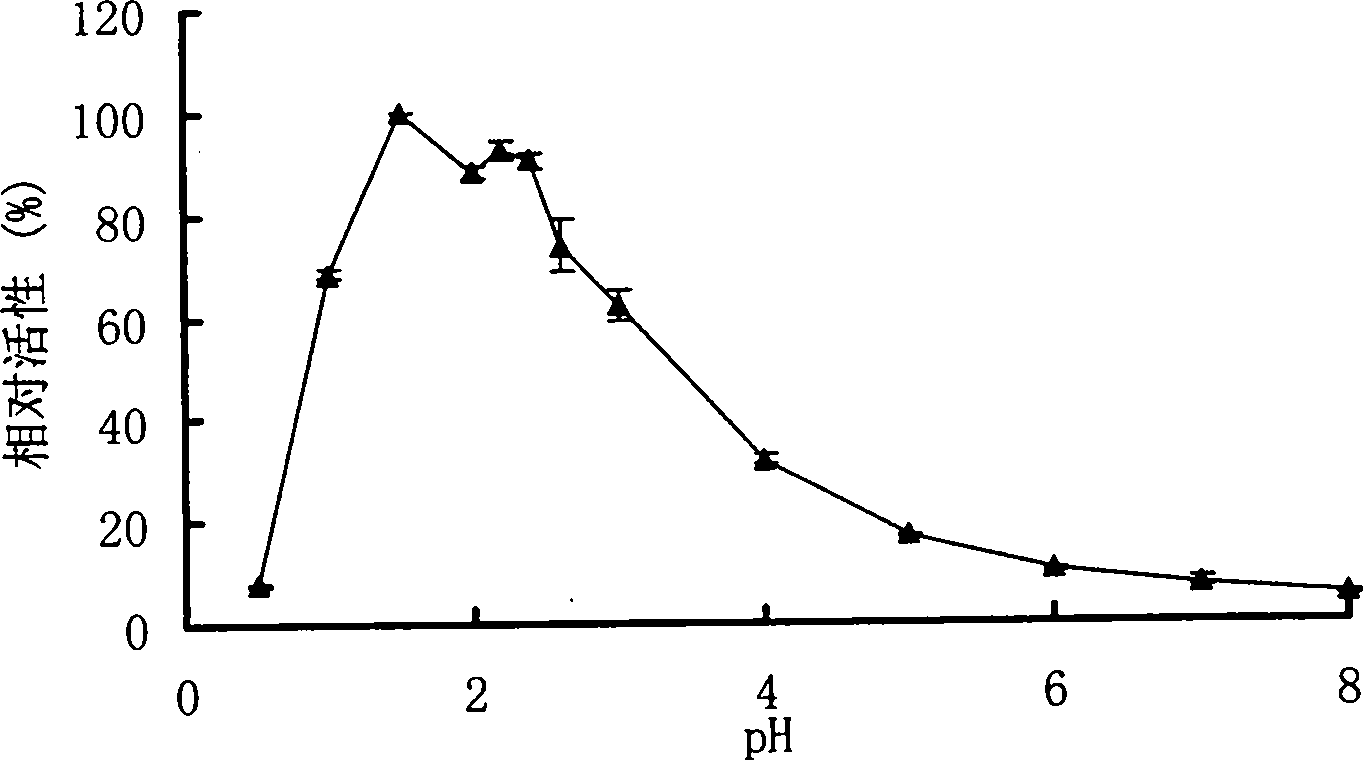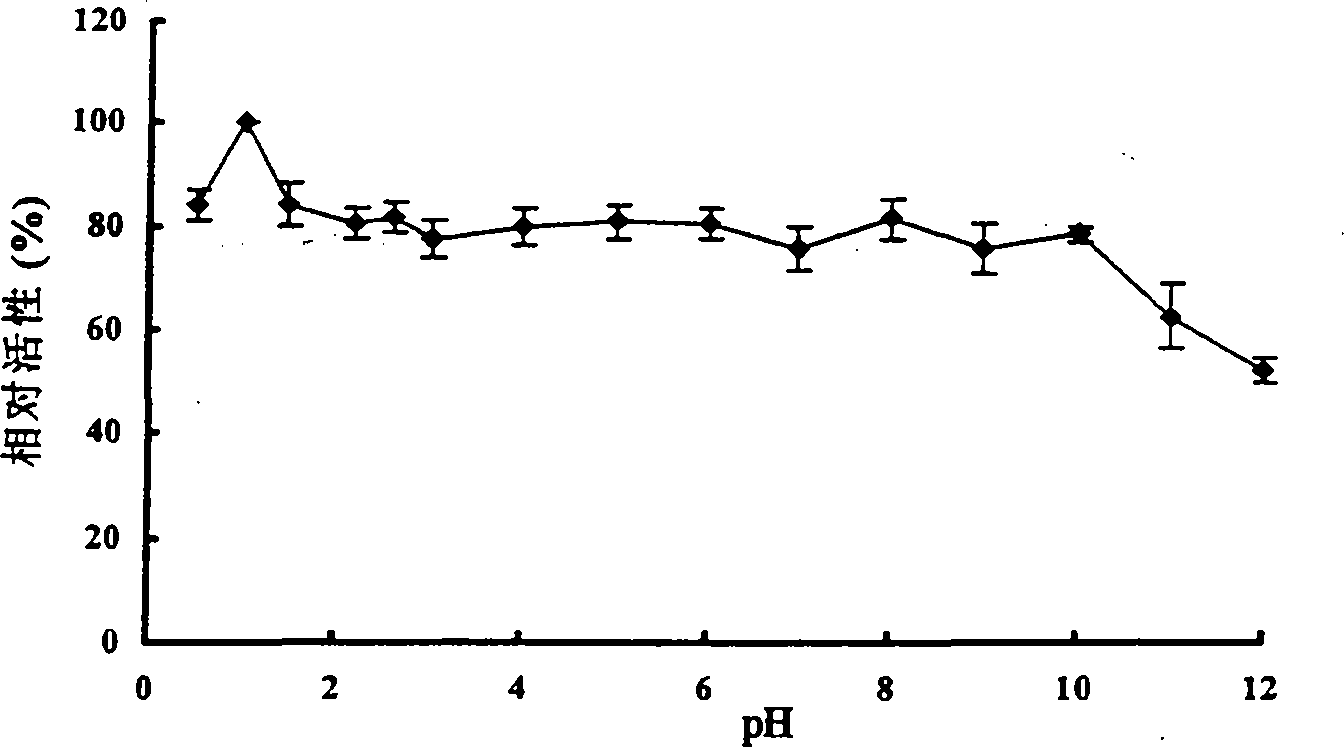Eosinophilic lactase BGALA, gene and application thereof
A lactase and gene technology, applied in the field of genetic engineering, can solve the problems of increasing the product processing process and cost, and achieve the effects of good protease resistance, high enzyme activity stability, and high lactose hydrolysis rate.
- Summary
- Abstract
- Description
- Claims
- Application Information
AI Technical Summary
Problems solved by technology
Method used
Image
Examples
Embodiment 1
[0041] Example 1 Acidophilic fungus Bispora sp.MEY-1 and its enzyme-producing properties
[0042] A sample of uranium mine wastewater from a mine in Jiangxi was cultured on potato juice medium, spread on an enzyme-producing medium plate, and incubated at 30°C for 5-6 days, and a transparent circle could be seen on the enzyme-producing medium plate. Proved to have lactase activity.
[0043] The acidophilic fungus Bispora sp.MEY-1 was preserved on May 19, 2008 in the General Microbiology Center of the China Committee for the Collection of Microorganisms (Datun Road, Chaoyang District, Beijing, Institute of Microbiology, Chinese Academy of Sciences, 100101), and its preservation number For: CGMCC No.2500.
Embodiment 2
[0044] Example 2 Cloning of the acidophilic fungus Bispora sp.MEY-1 lactase-encoding gene bgalA
[0045] Extraction of acidophilic fungus Bispora sp.MEY-1 genomic DNA:
[0046] Filter the mycelium cultured in liquid for 3 days with sterile filter paper, put it into a mortar, add 2mL of extract, grind for 5min, then put the grinding solution in a 50mL centrifuge tube, lyse in a water bath at 65°C for 20min, and mix every 10min. Homogenize once and centrifuge at 10,000 rpm for 5 min at 4°C. The supernatant was extracted in phenol / chloroform to remove impurity proteins, and then an equal volume of isopropanol was added to the supernatant. After standing at room temperature for 5 minutes, centrifuge at 10,000 rpm for 10 minutes at 4°C. The supernatant was discarded, the precipitate was washed twice with 70% ethanol, dried in vacuum, dissolved by adding an appropriate amount of TE, and stored at -20°C for later use.
[0047] A degenerate primer BgalAP1 was designed and synthesize...
Embodiment 3
[0054] The RT-PCR analysis of embodiment 3 lactase gene
[0055] Extract the total RNA of Bispora sp.MEY-1, the extraction method of total RNA is as follows: the bacterial cell centrifugation that will cultivate 54hr in the bran culture medium, get wet weight 100mg, use the phosphate buffer (PH7.0) of 1mmol / L Wash three times, grind into powder in liquid nitrogen, add ice-cooled 600μL denaturing solution (26mM sodium acetate, pH 4.0, 0.5% lauryl sarcosine, 0.125M β-mercaptoethanol, 4M guanidine thiocyanate) Then add 60 μL 2mol / L sodium acetate (PH4.0) successively, mix well, add 600 μL phenol-chloroform-isoamyl alcohol (125:24:1, pH4.7), shake vigorously, place on ice for 15min, Centrifuge at 10,000g at 4°C for 20min, suck out the supernatant, add an equal volume of isopropanol, place at -20°C for 30min, centrifuge at 10,000g at 4°C for 10min, discard the supernatant, add 1mL of ice-cold 75% ethanol to the precipitate and wash , the precipitated RNA was dried naturally, and d...
PUM
 Login to View More
Login to View More Abstract
Description
Claims
Application Information
 Login to View More
Login to View More - R&D
- Intellectual Property
- Life Sciences
- Materials
- Tech Scout
- Unparalleled Data Quality
- Higher Quality Content
- 60% Fewer Hallucinations
Browse by: Latest US Patents, China's latest patents, Technical Efficacy Thesaurus, Application Domain, Technology Topic, Popular Technical Reports.
© 2025 PatSnap. All rights reserved.Legal|Privacy policy|Modern Slavery Act Transparency Statement|Sitemap|About US| Contact US: help@patsnap.com



